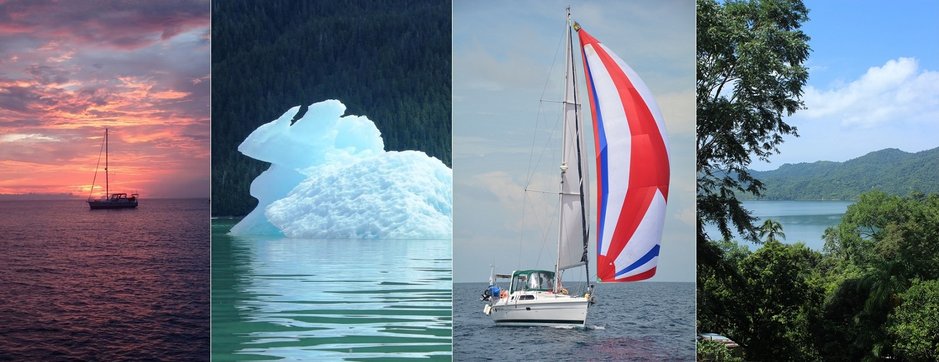Ok, here's another in the "how we do stuff" series of blog posts. Since we are sitting here in the marina with not a lot in the way of sailing stories to tell. Instead we thought it might be interesting to some folks to know a bit about how stuff works...
First, here is what the built in navigation system looks like on Apsaras:
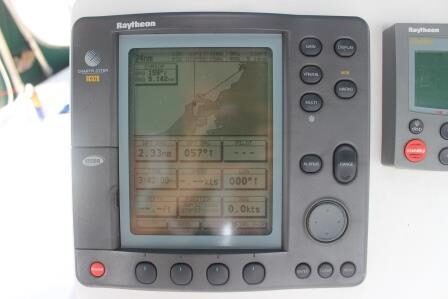
Yeah. Like 1980's technology. Upgrading the built in navigation systems would cost tens of thousands of dollars depending on how fancy you want to get. But there is another way. Here is Dave's nav station down below - its comprised of a USB GPS receiver (see red arrow) and a laptop running Open CPN.
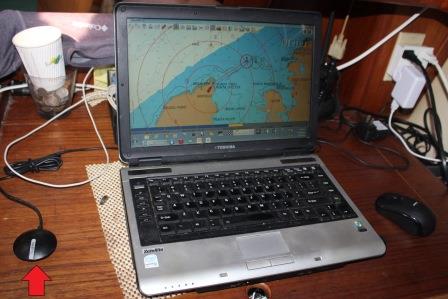
Open CPN is a free navigation system. But you are supposed to pay for the charts. Though many cruisers bootleg them. Charts are free in the US and Europe. But we paid $300 for our Caribbean charts. Here is what the electronic charts look like:
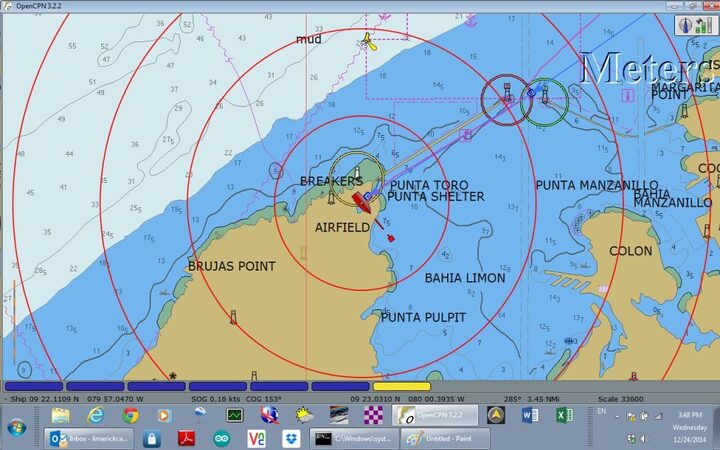
Dave also has AIS information that can feed into the navigation system. AIS is the Automatic Information System that lets you see all the big ships around you. We have an ICOM AIS receiver which shares the VHF antenna with the radio. The ICOM AIS receiver outputs serial information in NMEA (National Marine Electronics Association) format. Dave connected that serial output to a serial to Ethernet converter. The ethernet is then connected to our wireless router. The wireless router then broadcasts the AIS information to all the laptops aboard. This AIS information can then be put into the Open CPN system so that Dave can see all the marine traffic on the map. When the AIS is turned on the maps look like this:
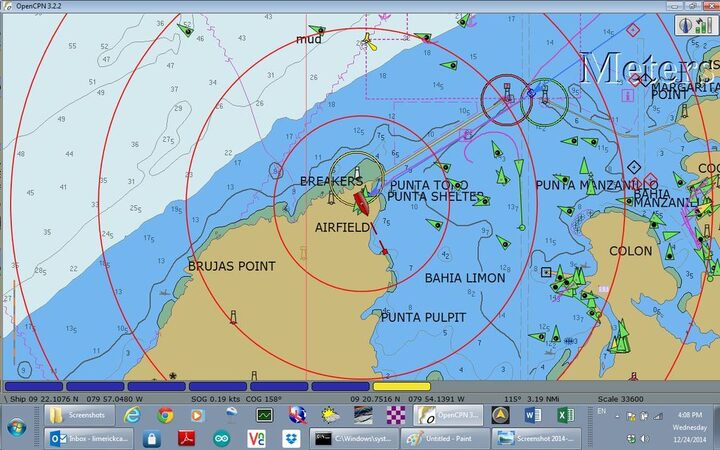
Then Dave runs a remote desktop program called VNC from Real VNC. He tried using other remote desktop applications but VNC was the first one that has worked reliably. This is key because it allows Dave to use his Android tablet in the cockpit. So basically he can sit in the cockpit with his tablet (which he has a waterproof pouch for) and run the whole navigation system from up top.
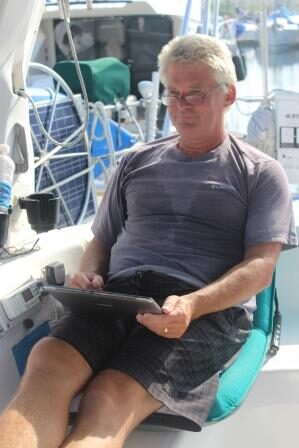
In case of lightning strike, we have a second laptop with everything installed.
